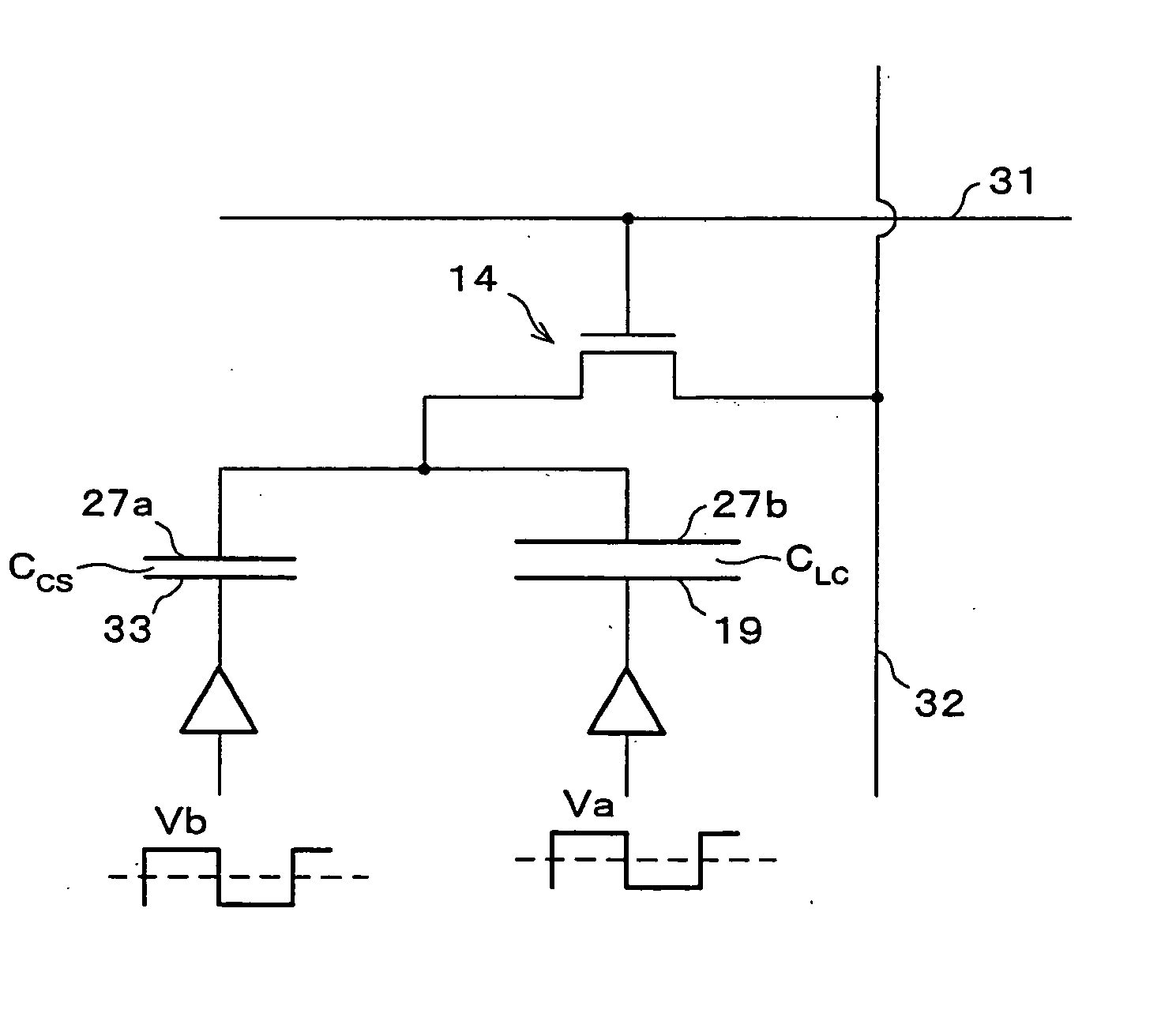Display device, method of driving same and electronic device mounting same
a technology of liquid crystal display device and driving method, applied in static indicating device, non-linear optics, instruments, etc., can solve the problems of inability to apply the foregoing techniques to display devices which deal with complicated information, inability to apply the foregoing driving method to matrix-type liquid crystal display devices, etc., to achieve the effect of reducing power consumption
- Summary
- Abstract
- Description
- Claims
- Application Information
AI Technical Summary
Benefits of technology
Problems solved by technology
Method used
Image
Examples
first embodiment
[0102] The following descriptions will discuss one embodiment provided with a display device of the present invention in reference to FIGS. 1 to 11.
[0103] The inventors of the present application tried to find out a cause of flicker noise generated when driving the liquid crystal display device having a Cs-on-gate structure with a rewriting frequency of 30 Hz or below, and have found to be the following.
[0104] In the case of a so-called Cs-on-gate structure wherein auxiliary capacitive electrodes of pixels in a liquid crystal display element having an active element are formed on a scanning signal line in one line above the pixels, the pixel electrode potential of the pixels largely fluctuate with an application of scanning signals onto the scanning signal line in one line above the pixels. Generally, when adopting the rewriting frequency of 30 Hz or higher, a response of liquid crystal molecules due to fluctuation in pixel electrode potential is averaged and is therefore not perc...
second embodiment
[0157] The following descriptions will discuss still another embodiment of the display device of the present invention in reference to FIG. 12 through FIG. 19. For ease of explanation, members (structures) having the same functions as those shown in the drawings pertaining to the first embodiment above will be given the same reference symbols, and explanation thereof will be omitted here.
[0158] The display device of the present embodiment has the same structure as the liquid crystal display device 1 except that a liquid crystal panel 51 shown in FIGS. 12 and 13 is adopted as a display element (liquid crystal display element) in replace of the liquid crystal panel 2 of the first embodiment as explained in reference to FIG. 3.
[0159]FIG. 13 shows the cross-sectional view of the liquid crystal panel 51 which is a cross section of the portion along a line B-B of FIG. 12 to be described layer. The liquid crystal panel 51 is an active matrix liquid crystal panel of reflective type, and t...
third embodiment
[0181] The following descriptions will discuss still another embodiment of the display device of the present invention in reference to FIG. 21 and FIG. 22. For ease of explanation, members (structures) having the same functions as those shown in the drawings pertaining to the first and second embodiments above will be given the same reference symbols, and explanation thereof will be omitted here.
[0182] The display device in accordance with the present embodiment is a liquid crystal display device which serves both as a transmissive mode and a reflective mode wherein the liquid crystal panel 2 in the liquid crystal display device 1 as explained using FIG. 3 in the first embodiment is replaced with the liquid crystal panel 1 illustrated in FIG. 21 and FIG. 22. As illustrated in FIG. 21 which is a cross-sectional view of the portion along a line D-D of FIG. 22, the liquid crystal panel 91 differs from the liquid crystal panel 91 in that the anti-reflection film 17 and the color filter...
PUM
 Login to View More
Login to View More Abstract
Description
Claims
Application Information
 Login to View More
Login to View More - R&D
- Intellectual Property
- Life Sciences
- Materials
- Tech Scout
- Unparalleled Data Quality
- Higher Quality Content
- 60% Fewer Hallucinations
Browse by: Latest US Patents, China's latest patents, Technical Efficacy Thesaurus, Application Domain, Technology Topic, Popular Technical Reports.
© 2025 PatSnap. All rights reserved.Legal|Privacy policy|Modern Slavery Act Transparency Statement|Sitemap|About US| Contact US: help@patsnap.com



